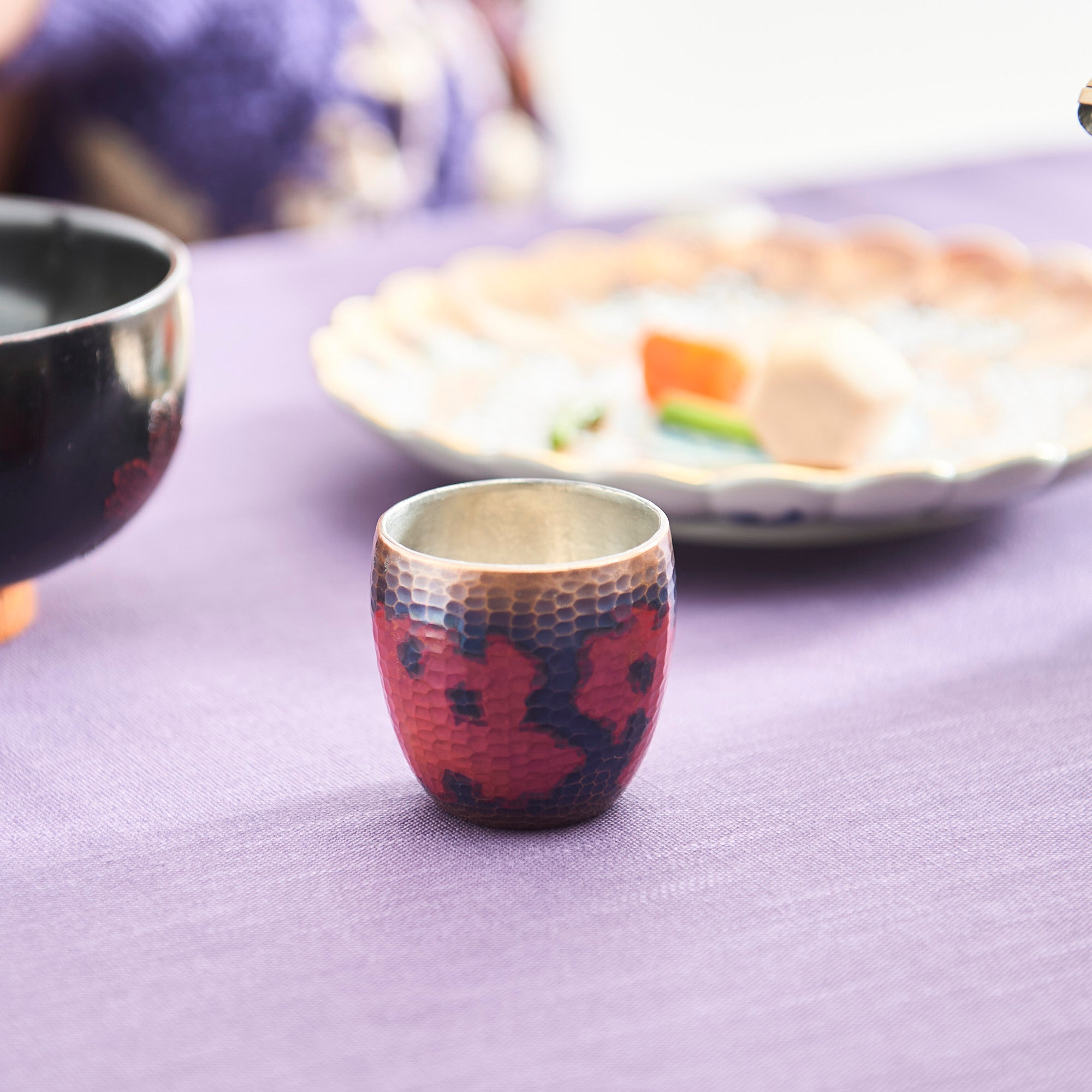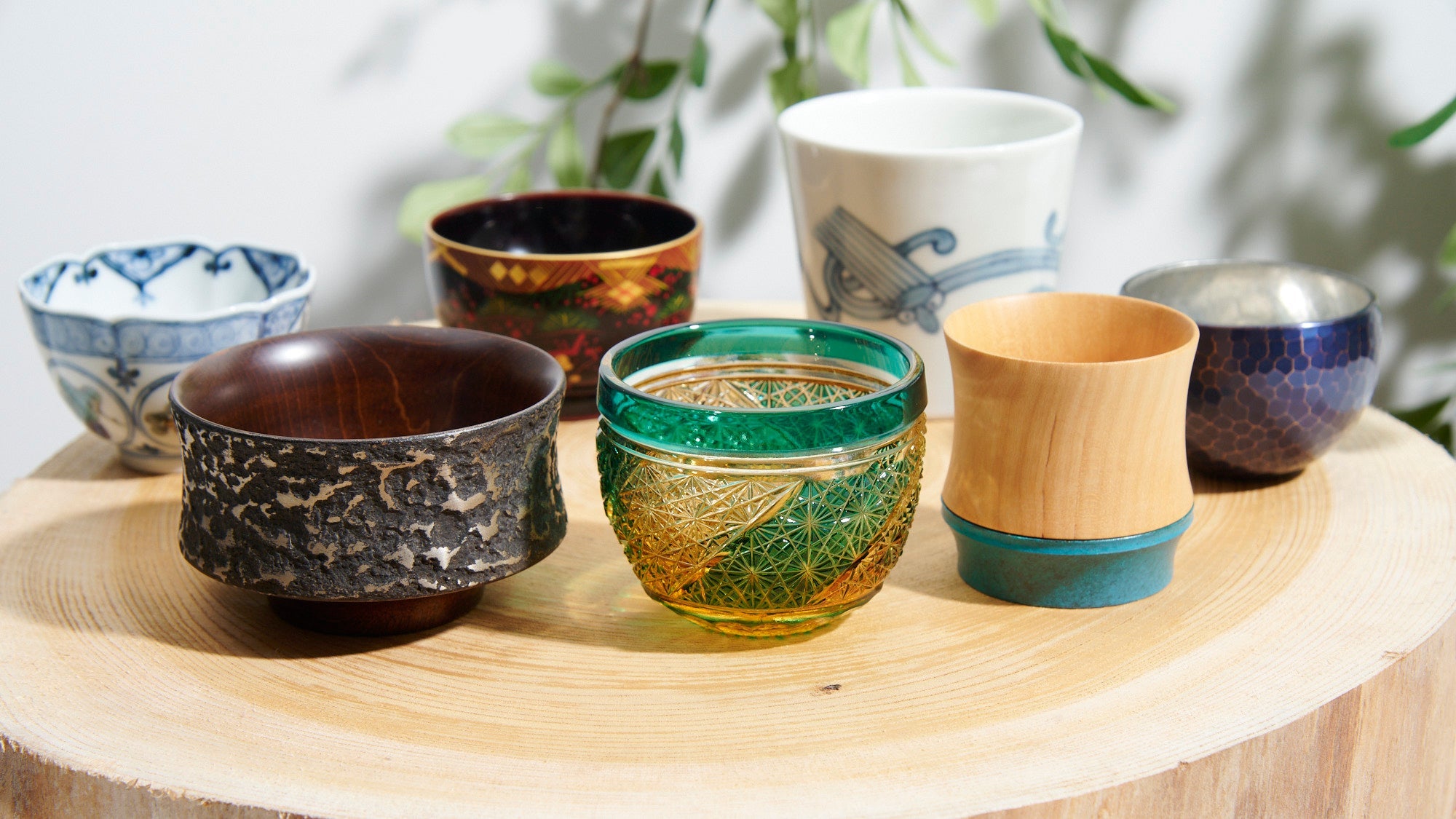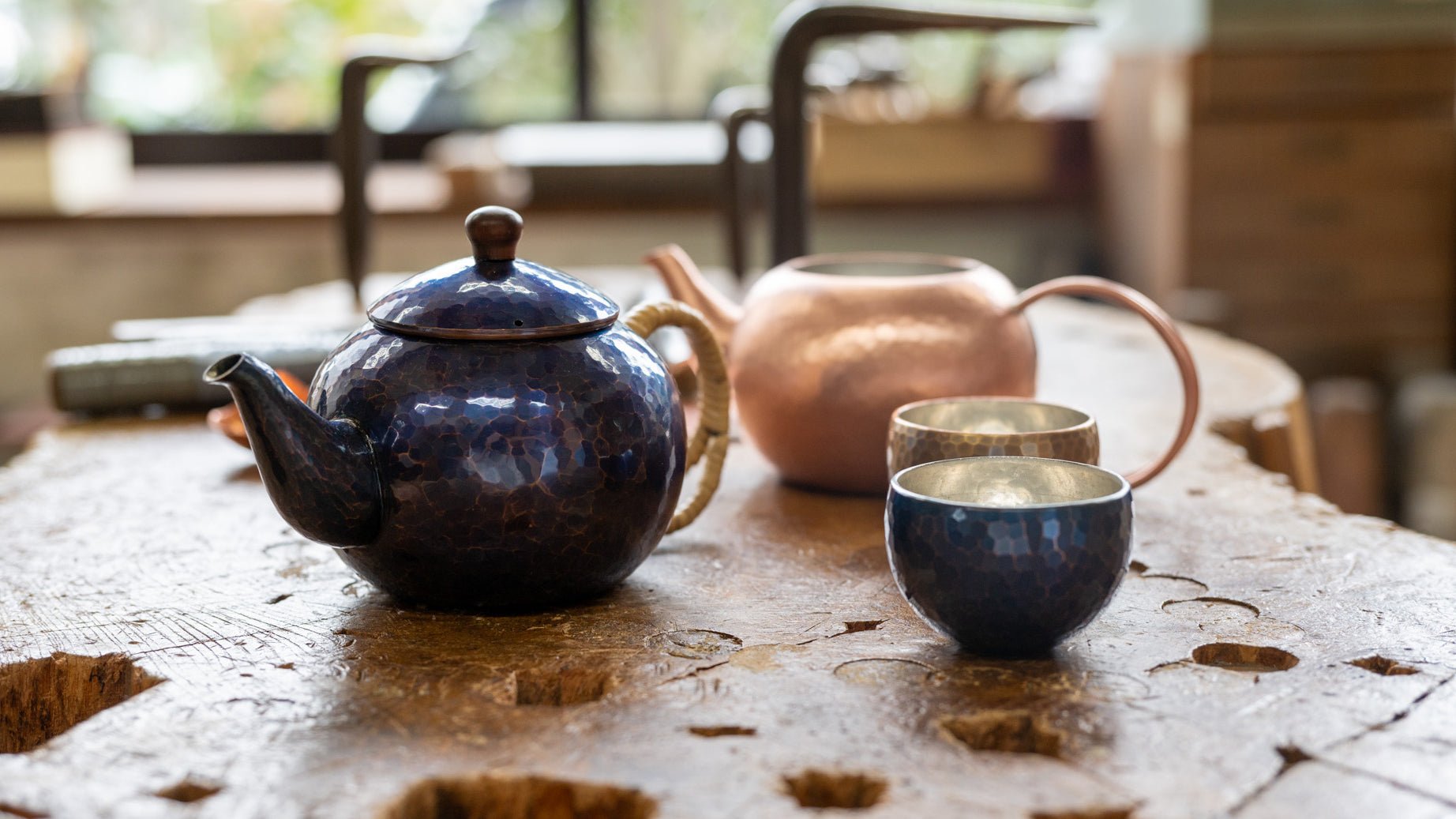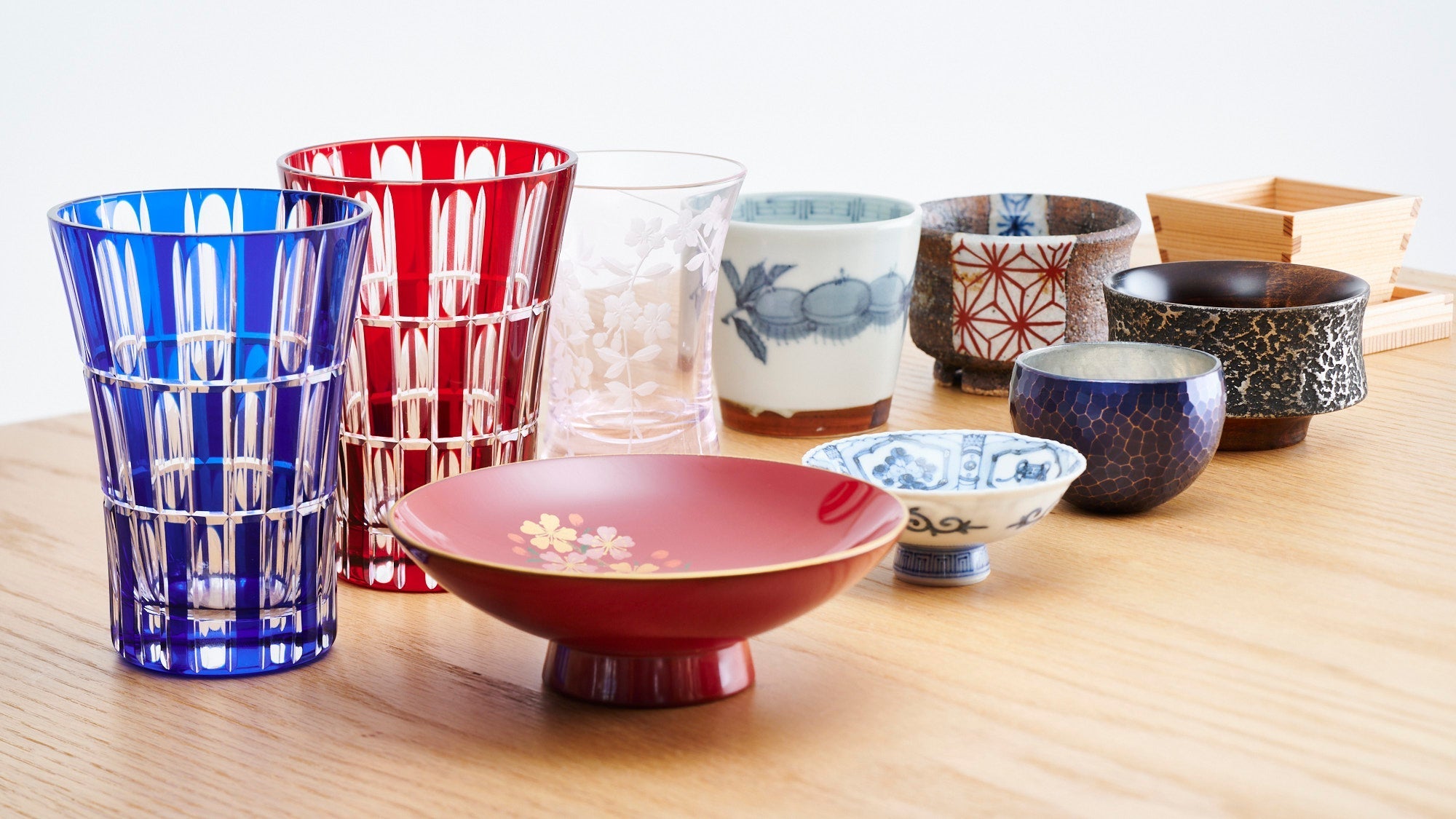





















Madder Red Nishiki Guinomi Sake Cup
Estimated Shipping Widget will be displayed here!
As vibrant and unique as the nishikigoi carp that inspired its design, this guinomi sake cup has a rare tricolor of copper, red, and blue.
Nishikigoi is a type of ornamental carp originating in the city of Ojiya, not too far away from Mt Yahiko, Niigata Prefecture, where Seigado’s workshop is located. Regarded as "living works of art," koi have long been treasured in Japan as symbols of good luck and positive omens.
This work by Seigado is created using the complex and time-consuming metal crafting technique called tsuiki, which involves hammering and embossing various metal plates, such as gold, silver, copper, and tin. Beautiful patterns emerge with the use of various hammers and chisels, and only a select few craftsmen in Japan are capable of producing exquisite metalwork using this method.
What makes this guinomi sake cup memorable, is the dexterous blending of a moody indigo blue with the prominent deep shade of red by the name of akane iro, also known as madder red. Symbolic of autumn, akane iro has been likened to the color of fall maple leaves and red dragonflies.
DETAILS
| Quantity | 1 |
| Size |
D 5 cm (2.0 in) x H 5 cm (2.0 in) [Wooden Box] 8 cm (3.1 in) x 8 cm (3.1 in) x H 6.5 cm (2.6 in) |
| Capacity | 50 ml (1.7 oz) |
| Weight | 74 g (2.6 oz) |
| Material | Copper, Tin |
| Package Type | Wooden box |
| Microwave | No |
| Dishwasher | No |
Maker / Brand
Seigado’s workshop is located at the foot of Mt. Yahiko in Niigata Prefecture, where high-quality copper was discovered about 300 years ago. This region is where the traditional tsuiki metalworking technique finds its roots.
In Japan, there's a saying that things get better with use, and Seigado's products possess a charm that inspires you to cherish and care for them over time.
Crafts
Metalwork has long been prized for its durability and gorgeous appearance. In Japan, bronze swords and harnesses were made from the Yayoi period (10th century BCE–mid-3rd century CE) based on techniques introduced from China and Korea. With the rise of Buddhism, the construction of temples, Buddhist statues, and ritual implements flourished, and metalworking techniques also advanced. Eventually, a wide variety of products such as tea ceremony utensils, Japanese swords, armor, and ornaments came to be manufactured.
Choose options






















Estimated Shipping Widget will be displayed here!
Guinomi

Seigado—The Radiant Beauty of Copper

Expert Tips: Guide for Choosing the Perfect Sake Cup

Layers of Delight: Hosting with a Shokado Bento Box



